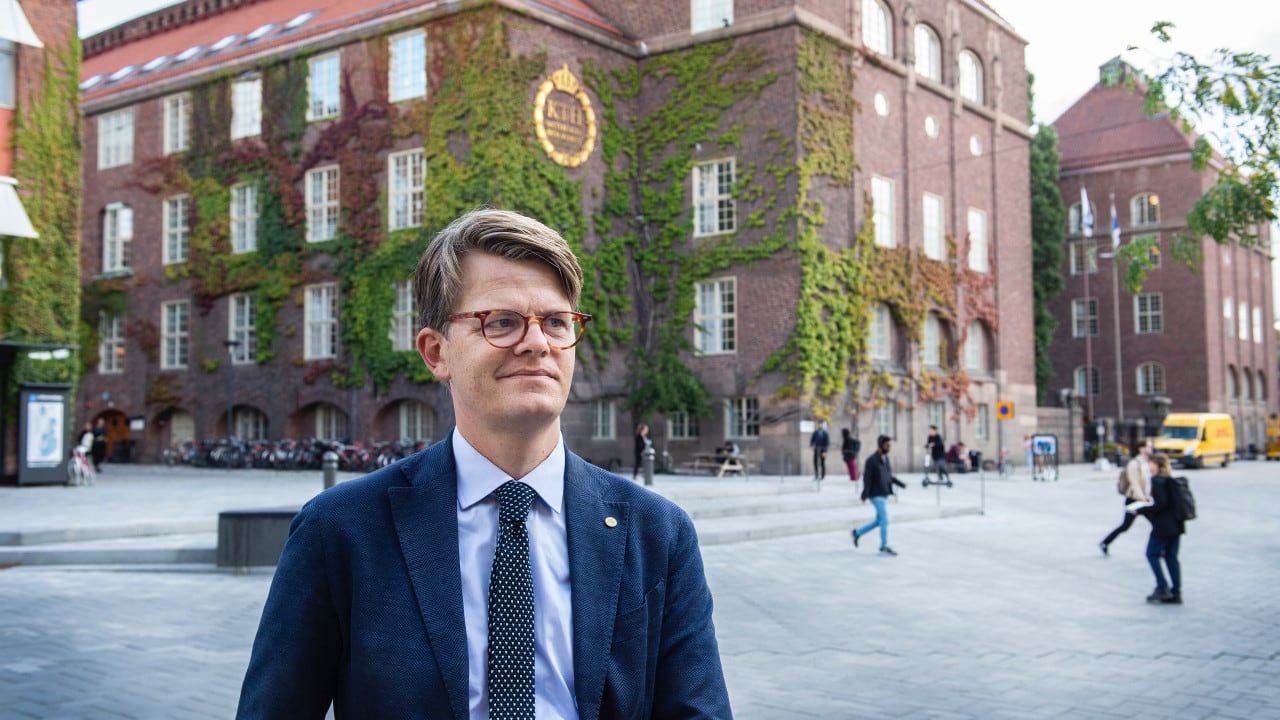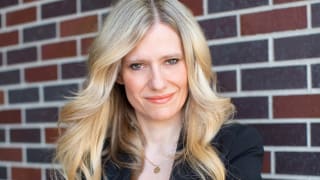How Swedish cities are betting on storytelling to make the transition to climate neutrality a reality
Getting stakeholders to understand your vision can be a challenge at the best of times. Sweden’s solution to engaging stakeholders in your sustainability strategy? Storytelling.
Per Grankvist, Chief Storyteller for the government-funded initiative, Viable Cities, explained to us how they’re pioneering a new approach to driving more sustainable change and how a local-centric approach is key to successfully changing behaviour.
First, Chief Storyteller is a really interesting title – can you give our readers a quick understanding of the scope of your role?
I’m part of something called Viable Cities, a government funded innovation initiative to help 23 Swedish cities become climate neutral by 2030, in line with the Paris Agreements. This started a few years back, and after a short while, they realised that they knew everything we needed to know now to become climate neutral, but the problem is that ‘climate neutral’ is an abstract concept.
When you talk about climate neutrality, people envision that they will get less of life; they’ll take your car away, they’ll take beef away, and you’ll never be able to go to Spain again. There’s this inherent fear about that. Also, whenever we talk about the future, it’s always those strange visionary images of a cityscape or a neighbourhood where everyone seems to be white and thin and it’s completely clean and there might be some floating cars hovering in the background. There’s nothing we can relate to. It’s just a vision without a plan, and a vision without a plan is just a hallucination.
What we do is bring in the knowledge about sustainable living and merge that with ancient knowledge about how you tell stories. When you tell storytelling, it’s not about marketing. Everyone hates marketing, even marketeers; that’s why everyone has ad blockers installed. Instead, it’s about finding a message to describe a near future scenario that you feel to be true. Emotional engagement is necessary to get change going; we need people to be actively involved with this process. I’m heading our research for developing a method on storytelling to help people describe what it will feel like to be in a city in the future and thus get the engagement of city officials and politicians to realise they can be bolder in their ambitions. And to understand that minimizing emissions doesn’t mean hindering the quality of life for your citizens.
What’s the key to striking the balance between data and facts and emotional storytelling? Or does emotional storytelling win out in the end?
We operate within a science and academic based environment; the Stockholm Royal Institute of Technology is the home base for this programme. Having a foundation of fact and of science is important otherwise you could just make things up. But at the same time, Donald Trump based his presidency on making things up and on emotion. Emotion is far more important to get people to change than facts, but nonetheless we have to get our facts right first and then build our stories on top of that.
We’ve identified a couple of general storylines based on facts that cities can use. They’re all about showing a day in the life of a citizen. But it’s important that it’s not perfect: in the stories, the woman’s bike will be stolen, and it’s raining so she has to get a new coat and a find a new way. There’s all kinds of frustrations, but at the same time, she can have a burger, she can get drunk and smoke a cigarette. And that has to be part of what we show because it’s part of what makes life worth living. It’s something you can relate to.
We’re doing a pilot in Gothenburg, and the hero has been homeworking. She’s teleworking in the morning, and then just as she’s about to go out for lunch, a drone arrives with a package which should have been delivered earlier. And it’s something people can grasp – we’ve all been annoyed by post arriving late and running your plans for a day, but here’s a modern twist to it. And all of this is underpinned with data. We shouldn’t over-rely on data, and we can overestimate it, but it’s still super important to make decisions and ensuring that your storytelling is accurate.
I know you have a focus around storytelling for sustainable strategies and that if you’re asking people to sacrifice things, then they need to really be able to believe in the future you’re selling them. Do you have any advice for how cities can help people picture that future?
It would be to completely focus on the quality of life. That should be the main part of the story. It’s not at all about putting emissions in the focus, but instead making the story as relatable as possible. And the physical location is important. No one is a global citizen, it’s complete nonsense. Everyone is local. What do they eat that is local? In the Northern part of Sweden, they eat foldable pizza and including that instantly makes it more relatable. So, make sure it’s super local.
I did a study on the importance of being local and looking at how portrayal of Little Red Riding Hood varies. In Sweden, the forest would be full of fir trees with a grey wolf, whereas in Spain, the wolf is beige and roams around olive groves. People naturally localise the story for their audience, and that’s what we’re trying to do. So, make it about quality of life, make it about events that people can relate to, and make it about the physical geography. That’s why it’s connected to place branding – there’s something about that city in particular that matters. And never make it about technology. We have the technology needed already; now it’s about changing behaviour.
Also, everything we do is documentary photography. A film offers too much information, and you don’t have time to think for yourself. Plus, films always have cuts, so you already know that it’s fake. Documentary photography feels true though. And finally, don’t forget to be boring. I did an interview for the BBC a few months back and that was their comment about the pilot story we showed them – that it was boring. And of course it is. Our lives are boring! A climate neutral future isn’t that special. It’s not around the corner, literally all the technologies are right here. It’s the behaviour that we need.
That’s why we believe this method can help officials become bolder by understanding that it’s okay, we’re not compromising in any way our ability to live a full life within the planetary boundaries.
The programme has a clear city focus, and it’s been interesting to watch cities taking a much more active role in global conversations over the last few years. Given the importance of locality to your storytelling approach, is this a strategy that will work above a city level?
Politics is always local – worldwide, people will have a local representative at the regional or national government. Everything is local and local is concrete, national is abstract. There is no story that is nationwide – it becomes mythology instead.
I was invited to provide some thoughts on the national strategy for Scotland around climate change. It was a great strategy, but it lacked a few important things in my perspective. They were saying that they would create so many hundred thousand jobs, and they were going to improve the economy, and I had to say, that’s not it. It’s about creating 250,000 Scottish jobs. It’s about improving the Scottish economy, because f*** the English and so on. Just adding that into it is important.
Whenever you invoke the local, the regional, everything makes more sense. No one’s ever Swedish, in the same way no one’s ever British – they’re from Cornwall, or the Highlands, or whatever. Your story has to be local to resonate.
That said, there can be a story for a region. Our programme was just given the assignment by the Swedish Government to provide a new story for the Northern Part of Sweden. For a long time, it’s been seen as sort of a huge warehouse for raw material. You come, you collect you copper, your iron, or your wood, and then you leave. But now there’s a lot more happening, and they need a new story for the region. We’re looking at doing an overarching story around the identity of the place, and then there would be local stories under that – but in a way, that’s more nation branding.
So, I think you can tell a story about a region in a way that will still make sense to the locals, but a nation is too wide. Unless you’re Luxembourg - then nations and regions don’t matter!
How has your strategy evolved as you’ve progressed?
When we developed the initial hypothesis, we thought we’re going to make a story for each city and then develop a method for finding out that story. We now think that there are going to be five to ten model templates for the stories. The major changes that need to happen are about safety, mobility, consumption… We’re creating shells of storylines around these and then adjusting them to make them locally relevant.
And then as we learn more about the stories and adoption of more sustainable behaviours, we can also be more sophisticated and crazy in the way we do stories to try and highlight that we don’t need to sacrifice quality of life to be sustainable. When the iPhone arrived, nobody talked about that transformation to society, and yet we still managed it perfectly fine.
Given the fact that you’re pushing for behavioural change, how are you tracking the effectiveness of your strategy?
Initially, we thought this could be used to inform citizens how they will behave, but we think now that this is a tool primarily for state and public-elected officials in cities to get them to be braver about their decisions: we want to show that you can make a lot of change and still be re-elected at the end of it. So, the way we track success at the moment is around the reactions of our audience.
We did a pilot in Malmö recently, and shortly before we arrived, they’d had a similar project come to show them what the future would be like – except it was a film that only included data, figures and numbers that they couldn’t relate too. But when we showed them our story, they understood and said “Yes, this is what we want. Now we understand it.” These are the kind of reactions we’re after.
The second way we’re tracking success is by asking the cities to sign a climate contract on how they will lower their emissions. It doesn’t matter where they are at the moment they sign the contract, it’s about making that commitment. Then every year, they will sign the contract again and revise their ambition. The clever part is that the contract doesn’t say “You have to be here,” or say if you’re doing well or not. All the cities have contracts, and they’re all very different in their ambitions, but the contracts help to provide steps to get them to their goal.
This more mission-orientated approach is now actually the template for how the EU will do it, based on what we do. You have the contract, and then you get to have the hard goals around emissions and what cities are doing themselves and with the citizens. It’s not judgemental either. If your current plans are crap, then that will get noted, and then by your own will, you’ll probably update them. There’s a lot of discussion between these 23 cities, and you start to realise “Oh, we’re much worse than so and so, and we need to shape up because they’re our sister city.”
That leads me nicely to my final question, which is how are the cities on the programme working together to realise this strategy?
Collaboration is a vital part of Viable Cities. You say you have the mission to be climate neutral by 2030, but you have no idea how you’re going to get there. Doesn’t matter. You start working and develop a portfolio of projects you’re testing – and you might only have 10 projects in your portfolio, but another city will have 10 as well and then you can learn from each other.
That said, local pride is huge. When Gothenburg asked me to do a pilot for them, they wanted to have something special, but we just don’t have the facilities for that now. So, we’re adjusting the story to be local, but I’m trying to leave it as close to the original story for Malmo as possible to prove the point. The major problems we’re facing are not that different, nor is what we want to achieve. So, a locally relevant adaptation of the same story will be just as successful in a new city.
Everyone wants a higher quality of life, but how can we make that happen if we don’t try to learn from each other? It’s not that we’ve built collaboration into the programme; it’s a demand – a must-have – in the structure of the story. You won’t be able to see it in any individual story - which will all be locally tailored - but in the back end, everything is standardised as much as we can. Still, they won’t feel that way, but rather as true stories that show that a higher quality of life with lower emissions is possible for all.









